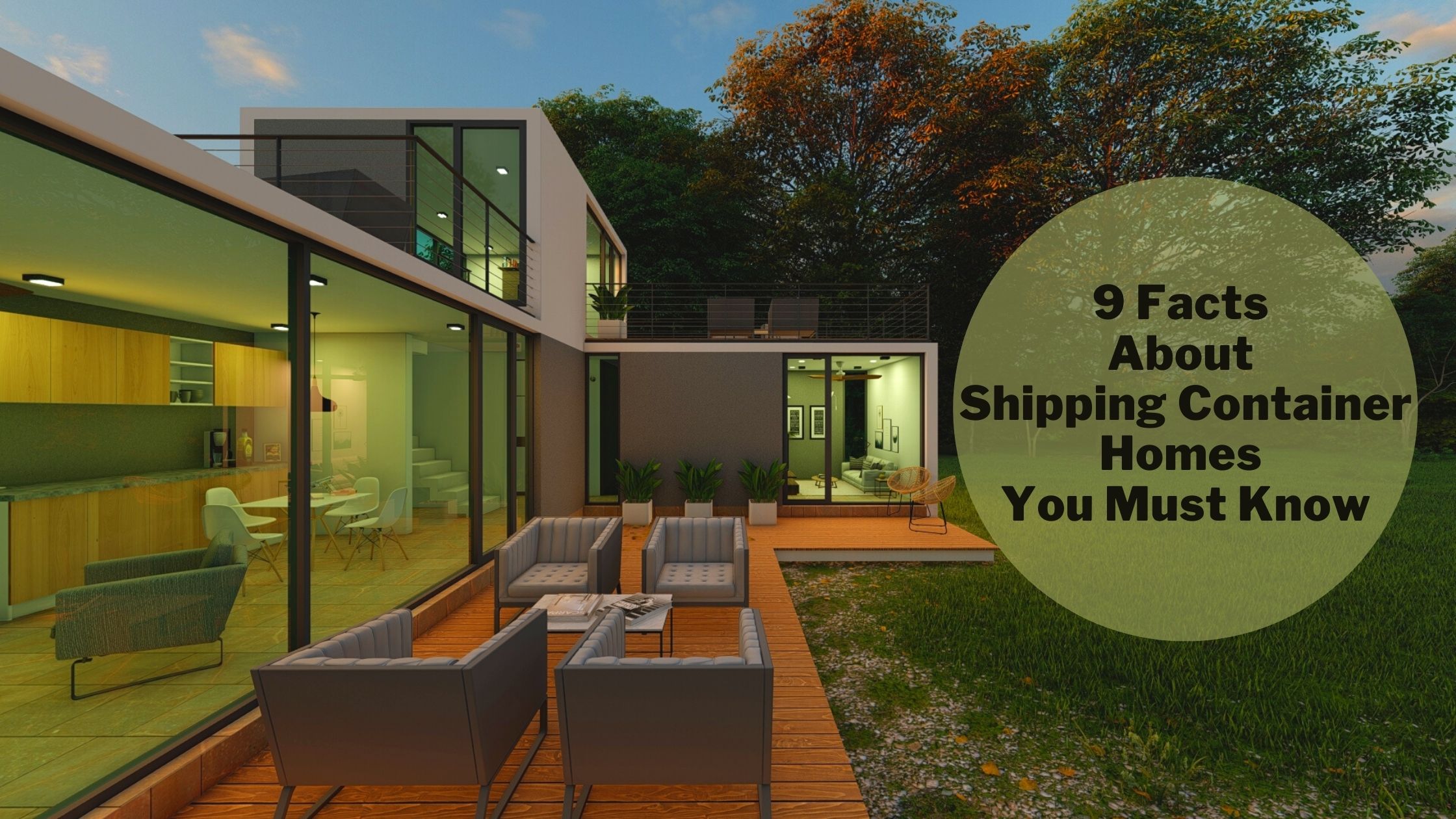9 Facts About Container Homes You Must Know
Prefabricated (prefab) container homes are the latest architectural trends in the housing industry to hit the modern lifestyle trend. Since these prefab container houses are affordable and eco-friendly, you can build your very own container house for a surprisingly low cost.
Here are some astonishing and informative facts about prefab container homes, which you must be knowing before buying or making a perception.
1. Western countries and port cities have the most usage of container homes
Houses in a few countries have been built with cargo shipping containers. Thanks to their eco-friendly architecture and affordability.
However, the concept of modern homes is preferred mostly in Western countries and port cities where container homes are popular. It includes China, New York, Cape Town and Tokyo. In Europe, Canada and the United States, container homes are more affordable to build as compared to traditional homes.
These prefab container homes are making a strong presence in India as well. Surprisingly, such structures are already established in a few locations in India, including, Bangalore, Hyderabad, Pune, Mumbai, Ahmedabad, and Jodhpur.
2. Prefab homes are invented in US
According to the first official records, a man named Phillip C Clark had filed the first patent for converting shipping containers into a habitable building in 1987.
In 2006, a US-based renowned architect, DeMaria designed the first two-story container home in America. He got the structure approved under the strict guidelines of the nationally recognized Uniform Building Code. Known as the Redondo Beach House, it is composed of eight recycled containers.
3. Prefab Homes also uses concrete but very less
Concrete is the single most used material in the world with more than 10 billion tons every year. Mainly, it is used in the construction industry.
Shockingly, the method used in manufacturing concrete is quite highly toxic to the environment. Many homebuyers across the globe are looking for an alternative to traditional houses to avoid the usage of concrete.
The prefab home is made up of materials, including aluminum and steel, that are recyclable and do not harm the environment. It requires very less concrete in building a prefab container home, and that too just for its foundation. That’s why the container homes are considered as eco-friendly homes.
4. Prefab homes are made of special metals not plastic
Many of us might think that the box-shaped container home is made up of plastic, but not.
The high-end luxury container home is made up of special corten steel. It is also known as weathering steel, and is the primary material used in shipping containers.
Manufactures use corten steel because it is weldable and rust-resistant. It means that a piece of paint chip off of the steel, rust will form at the surface but go no deeper.
5. Prefab homes have same life span as traditional homes if maintained properly
Container homes can last equally long as a traditional brick mortar house as long as long as they are properly maintained. Notably, rust is the most common issue that reduces lifespan of a container house.
Hence, keep inspecting and looking for rust spots every month or two. In case, you find such spot, you should get it repaired to avoid future damage.
6. Prefab homes cost lesser
The cost of prefab container home depends upon the requirements. However, the cost may start from Rs 4,500 (USD 65) per square feet.
One of the major perks of buying a container home is that they are affordable. It costs over 10-25 percent less as compared to traditional homes.
The material used in building a container home includes a metal roof, exterior walls, and a metal frame that are cost savings. You need to hire subcontractors for plumbing, painting, electrical and other works if you still wish to go with a traditional house.
Many NGOs are adopting the concept of container homes to provide shelters to the homeless poor due to its less cost.
7. Built during 2nd world war
This is one of the most interesting facts about container homes that it played a major role post-second world war in the United Kingdom when there was a housing shortage. In March 1944 post-war, container homes were lawfully outlined in the Housing (Temporary Accommodation) Act 1944.
During the wartime government under then, Prime Minister Winston Churchill proposed the requirement of housing due to the shortage. Meanwhile, they built over five lakh prefabricated container homes with a lifespan of up to ten years.
Under the Housing (Temporary Accommodation) Act 1944, it was aimed to deliver over three lakh units of prefab homes within ten years, in the budget of £150 million.
8. Shopping malls in Container Homes
The trendy prefab container homes are being used for many purposes across the globe. Some have converted it into restaurants, farm houses, gyms, etc. Many of you may not know that there is a shopping mall in Texas built from shipping containers in 2018.
Another interesting architecture built from two units of containers is a cafe namely ‘The Coffee Box’. It was constructed in 2019 and is running in downtown El Paso, Texas.
A number of similar container shopping centers already exist in London as well. The place is the center of attraction among the visitors.
9. Movable and customizable
With customized features and seamless finishing, you can ask the architect to design your prefab house as per your requirements. You can customize windows, doors, floor, walls etc.
Interestingly, container homes are easily movable. If you are a wanderlust and want to explore different places, these homes are truly made for you. Many people plan to purchase prefab container homes but didn’t know whom to approach.
Did you know these facts about container homes?
Neuvasa, India’s first eco-friendly prefab luxury container home builder will provide you every knowledge about prefab shipping container homes. Let’s get in touch if you have any question about the prefab homes, we will be happy to assist you.

